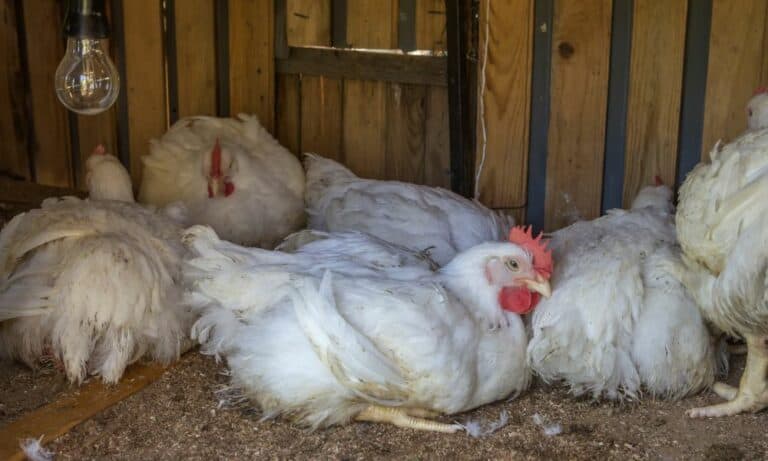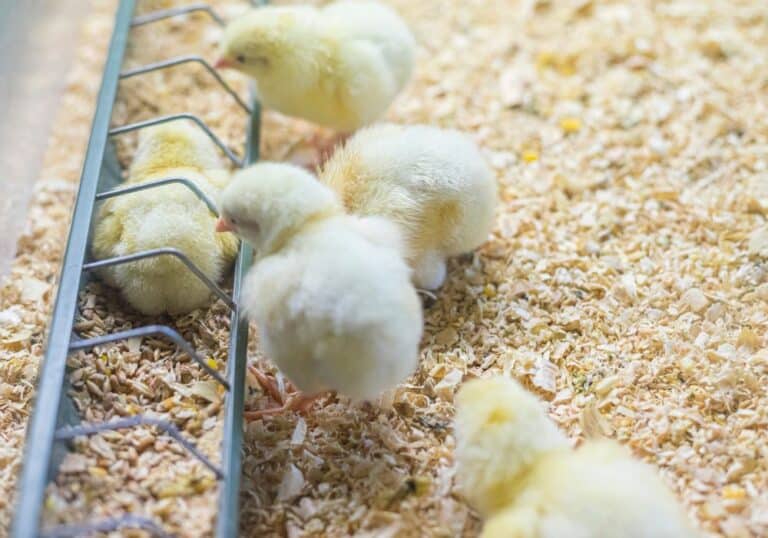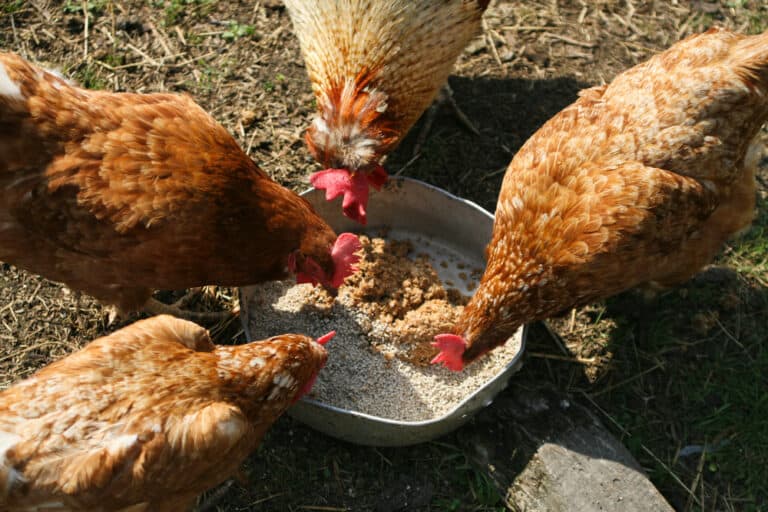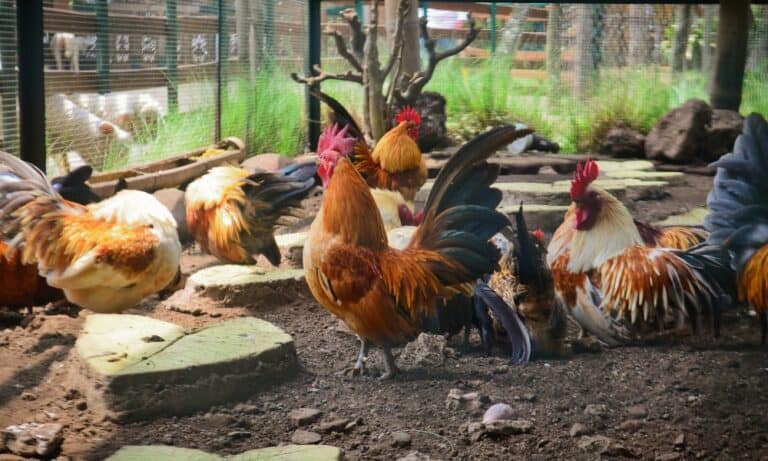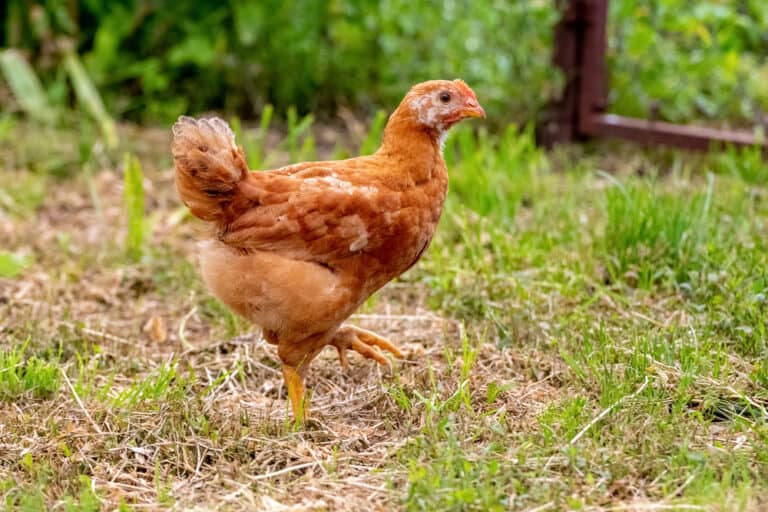Like other birds, chickens are entirely different from mammals, so many people are unfamiliar with their anatomy. For instance, a common question among poultry owners is whether do chickens have tongues and teeth. Have you ever thought about that what is hidden behind their pointed beaks?
Yes, chickens have tongues, but this body part is short and pointy. Unlike people and other animals, fowl can’t stick them out under no circumstances. Even though most people are unaware of their existence, they have a crucial role in tasting food, swallowing, communicating, and preening.
Chicken tongue dimensions |
|
| Tongue parts | Dimensions +/- possible standard errors |
| Tongue length | 0.93 inches (23.69 mm) with SE of 0.077 inches (1.95 mm) |
| Tongue body width | 0.10 inches (2.55 mm) with SE of 0.013 inches (0.34 mm) |
| Tongue body thickness | 0.12 inches (3.17 mm) with SE of 0.014 inches (0.35 mm) |
| Tongue apex width | 0.40 inches (10.15 mm) with SE of 0.037 inches (0.95 mm) |
| Tongue apex thickness | 0.04 inches (1.11 mm) with SE of 0.004 inches (0.09 mm) |
| Tongue radix width | 0.24 inches (6.16 mm) with SE of 0.024 inches (0.62 mm) |
| Tongue radix thickness | 0.23 inches (6.01 mm) with SE of 0.022 inches (0.56 mm) |
| Papillary crest width | 0.36 inches (9.25 mm) with SE of 0.034 inches (0.86 mm) |
*Scientific paper by Tuba Damla Ertaş and S. Erdoğan
Do Chickens Have Tongues?
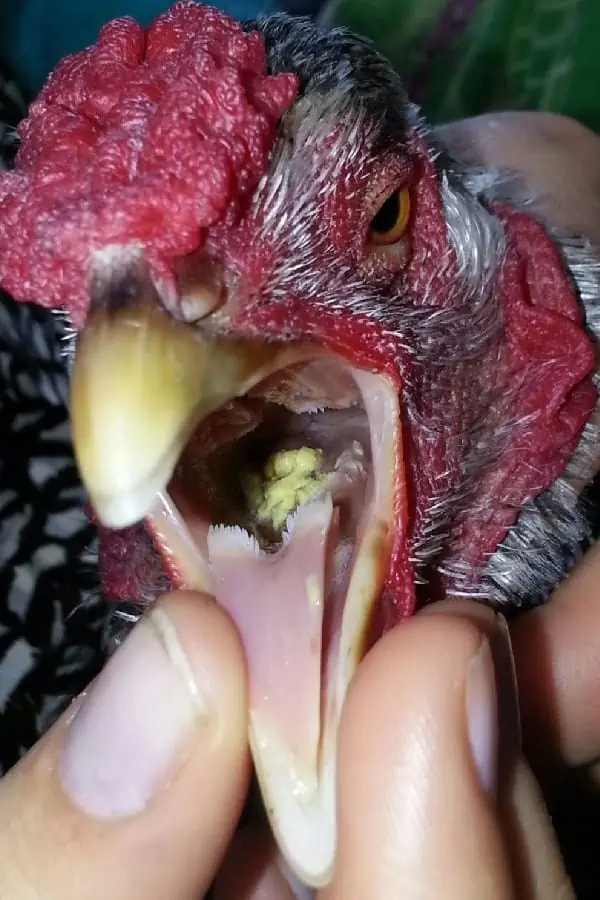
Chickens are birds from the Galliform family, along with turkeys, quail, and pheasants. These species have similarly structured tongues but are entirely different from those you are used to seeing in mammals.
Chickens’ tongues are unique triangle-shaped muscle organs, and precisely describing them can be challenging if you have never seen them before. They are small, spiky, and pale, designed to perfectly fit the lower beaks’ bottoms, looking like they are part of this head part.
However, they are a bit shorter than the lower beak cavity, allowing perfect laying inside. You can notice that the tongue may stick to the bottom beak’s surface when chickens spend hours without water and become dehydrated.
Chickens’ tongues never stick out like humans and many other animals, so you can’t see them, particularly from afar. In fact, they are perfectly integrated into the beak and adapted to a specific way of food intake in birds.
Unlike mammals, fowl are without cheeks, lips, and teeth. However, their beaks and hard tongues perform the undisturbed function of taking and swallowing food.
Be aware that your chickens usually don’t tolerate opening their beaks and checking their tongues without resistance. The rare opportunity to look at this organ is when your hens are upset and start cackling loudly or when you accidentally stay near the rooster when crowing.
Chicken Tongue Appearance
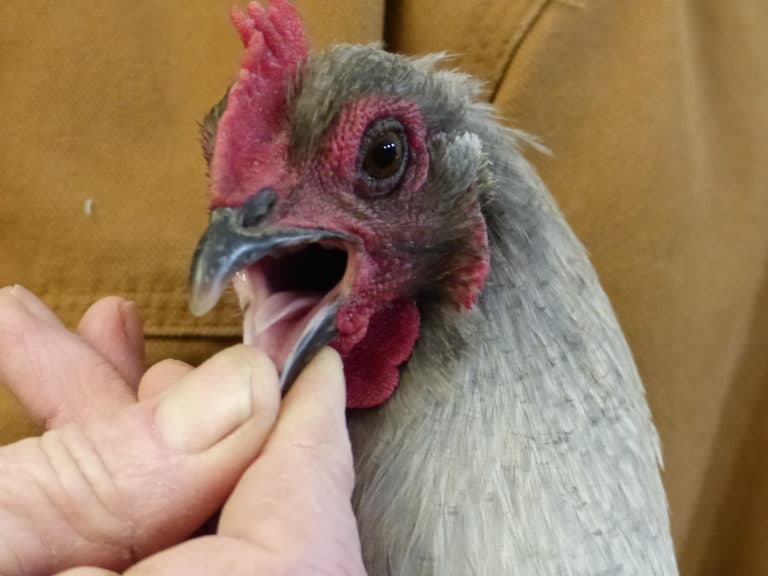
Chickens have tongues that perform a primary function, as in other animals. However, you can see some specifics in their appearance that distinguish these organs from those in other animals. Let’s take a look.
1. Texture
The chickens’ tongues are rough and have a surface texture covered in tiny barbs (papillae) reminding fine sandpaper. Such a surface helps fowl take even the tiniest grains and effortlessly swallow them.
You can recognize the so-called papillary crest positioned transverse to the tongue’s upper side, near the base. It has a crucial role in food swallowing but also prevents vomiting.
2. Color
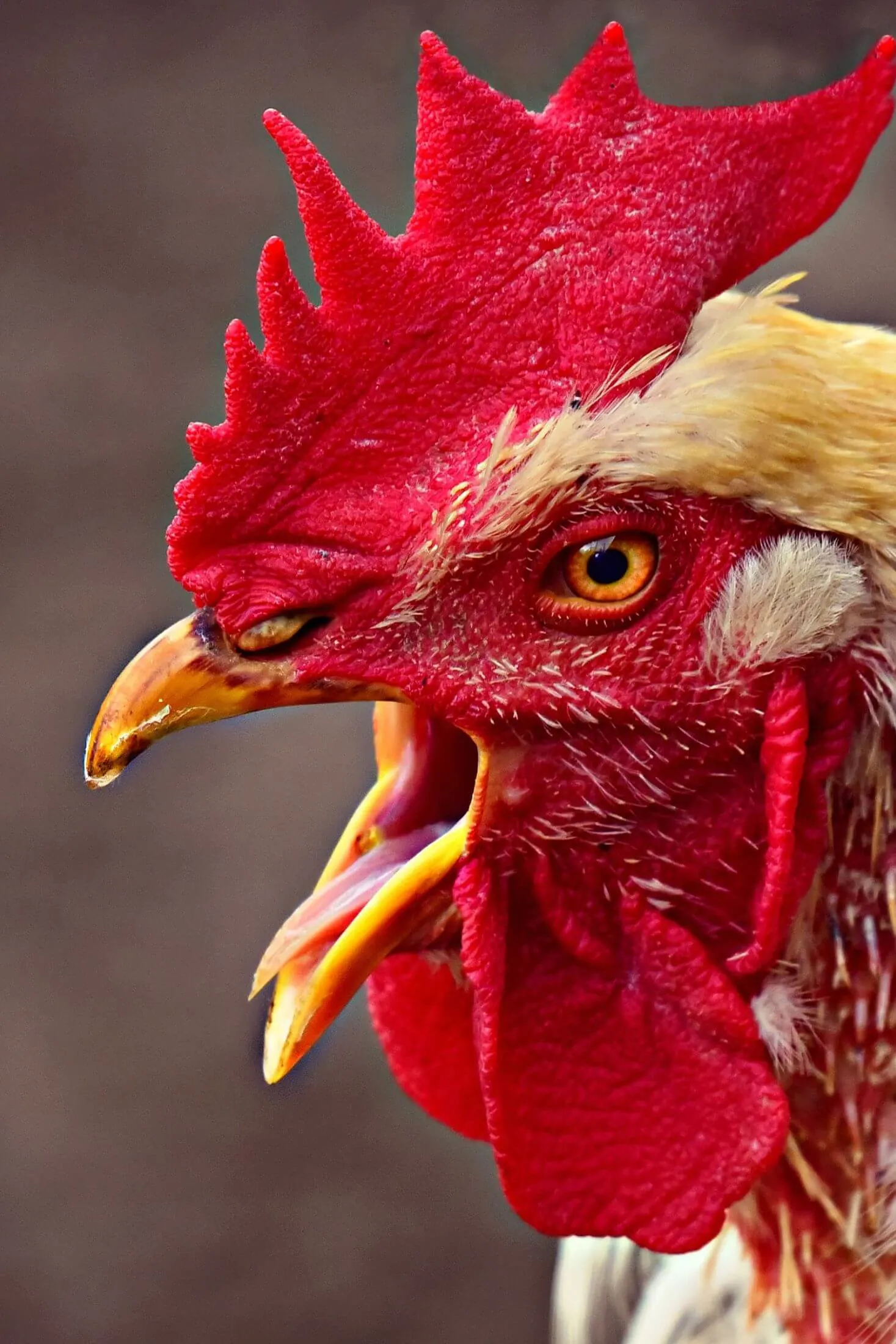
Chickens’ tongues can vary slightly in color, depending on their breed. However, they are consistent, regardless of the part and position in the mouth. In most cases, these organs are pale pink, with minor or major deviations in shade.
Interestingly, the tongue color almost always matches the rest of the chicken’s mouth, but you can also see deviations in some breeds.
3. Size
Since chickens’ beaks are small, you can expect their tongues to be tiny, as well. The anatomy prevents fowl from sticking their tongues out like most other animals since they are shorter than beaks’ cavities. However, they are movable inside.
They remind a triangle, with the base deeply positioned in the throat and the tip near the beaks’ openings. Interestingly, their size never varies much in adults, regardless of the chicken breed.
Their thin, pointy shape and length of approximately 0.75 to 0.95 inches (19 – 24 mm) entirely fit the space they occupy. On the other hand, they are shorter in pullets and cockerels than adults and typically 0.60 inches (15 mm) long. Chicks usually have tongues under 0.40 inches (10 mm) long.
Chicken tongue width and thickness vary depending on the breed and the tongue part. For instance, the tongue body is approximately 0.12 inches (3.17 mm) thick, while its width is 0.10 inches (2.55 mm).
4. Structure

Chickens’ tongues are composed of three parts, a body, a knife-like apex (tip), and a radix (rooth) attached to the base. You can also notice a papillary crest, the formation that separates the lingual body from its root.
It consists of large mechanical conical papillae placed in a row on the tongue’s lateral sides. These papillae are a specific feature existing only in birds and are distinctive only for their tongues.
They are organized in a proper V shape and arranged from the tongue body to the radix. A strong frenulum attaches the smooth ventral tongue surface to the lower beak bottom.
Besides, a chicken tongue has a sharp, highly keratinized tip and contains numerous salivary gland openings that produce saliva. You can recognize anterior and posterior salivary glands. Anterior ones are arranged on the tongue body, while posterior glands are settled in the tongue root. As expected, they facilitate food swallowing.
5. Lingual nail
A lingual nail is a specific chicken tongue part placed at its tip. It is a hard keratin structure reminding human nails and helps chickens take food. You can imagine it as a partially flexible spoon for scooping up a feed from the ground and bringing it inside the beak.
Its primary purpose is to allow chickens to pick up more food at once, making feeding less of a chore. Besides, it helps birds to catch even the tiniest seeds and grains efficiently.
6. Taste buds
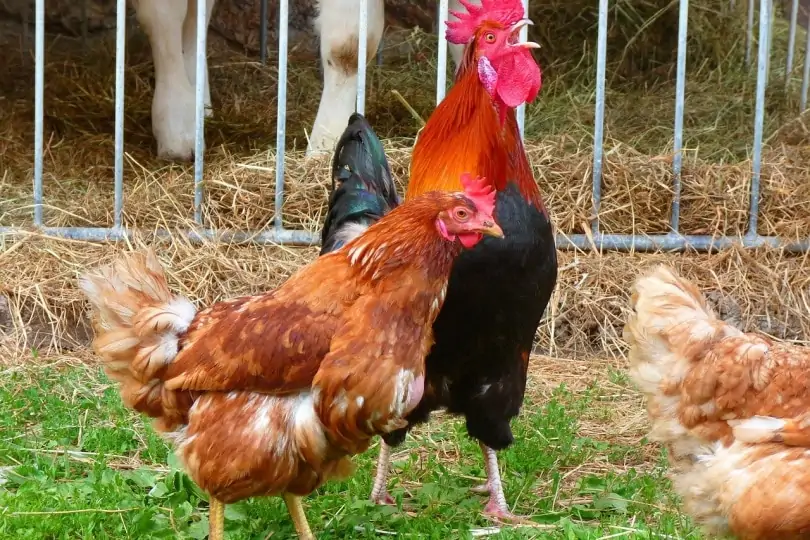
Chickens’ tongues have taste buds on the surface that help them differentiate various flavors. Interestingly, these birds better recognize and taste flavors of ingredients dissolved in water than dry ones. That is probably one of the reasons why they prefer consuming food with a significant water amount.
Their number is approximately 240 to 360, depending on the age and breed. It is pretty modest compared to about 8,000 to 10,000 taste buds in humans or 15,000 to 20,000 in cattle.
Even though the difference in taste bud number and food sensitivity is drastic between these species, you should consider the animals’ mouth size. Additionally, the taste bud number in chickens depends on their breed, age, gender, and type.
The rule of thumb is that young fowl have more of these taste receptors than older ones. Additionally, meat birds and broilers have more buds on their tongues than laying hens. Finally, pullets and hens have fewer taste buds than cockerels and roosters.
Chickens have tiny tongues, so their response to various tastes is different than in mammals. However, they are capable of reacting to chemical stimulants and recognizing different foods’ flavors.
For instance, it is known that chickens can’t recognize spicy food because they have buds for only five tastes, including:
- Sweet
- Salty
- Bitter
- Sour
- Umami
However, chickens can’t recognize these flavors equally and are more tolerant of sour than bitter flavors. Besides, they react to salty and sweet flavors only when food contains them in high concentrations.
Unlike humans, tongues are not chickens’ primary taste receptors because most taste buds are arranged in the oral cavity. Only 2% are located on the tongue surface.
What Do Chickens Use Their Tongues For?
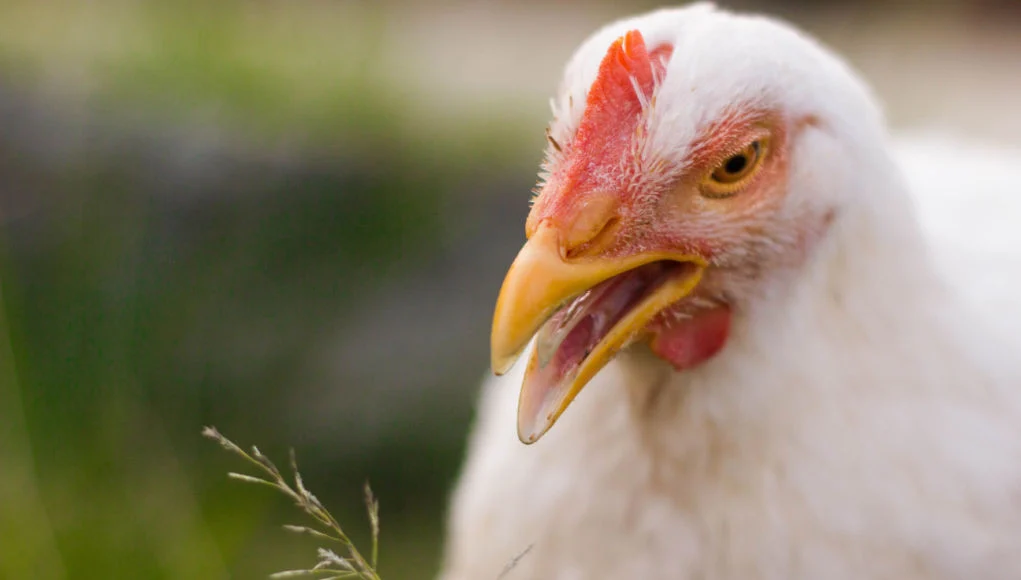
Even though chickens can’t manipulate their tongues like humans and domestic or wild animals, they have a crucial role in feeding, recognizing various tastes, preening, and communicating.
1. Tasting
As mentioned, most taste buds are arranged in the mouth cavity. About 240 to 360 are on the tongue surfaces, allowing chickens to recognize five taste types, except spicy flavors.
2. Swallowing
Chickens use beaks to pick out food without the necessity of using tongues to move it in the mouth cavity. However, this organ helps transfer ingested ingredients to the esophagus and their swallowing. Interestingly, their function in water drinking is almost insignificant compared with mammals.
3. Communication
Chickens are social creatures that use their tongues to produce 20 to 30 different noises while communicating. Even though they make the sound primarily by controlling the syrinx muscles, tongues help further fine-tuning.
4. Preening
Fowl use their beaks for preening, a process of removing waxy oil deposits from preen glands placed at the tail base. Then, they include tongues to help them apply that oil over the feathers.
Summary
Chickens have tongues and successfully use them to eat, communicate with other flock members, and preen themselves. Unlike mammals, chickens can’t stick out their tiny pointy tongues freely because their movements are limited. Additionally, they have only 240 to 360 taste buds on their tongues, while most are arranged in the oral cavity.

